Identify potential scientific collaborations:

Browse Featured Research of IOS Members below!
Are you an IOS Member and would like to have your research on this page? Please contact Matthew Boersma.
View IOS Collaborations
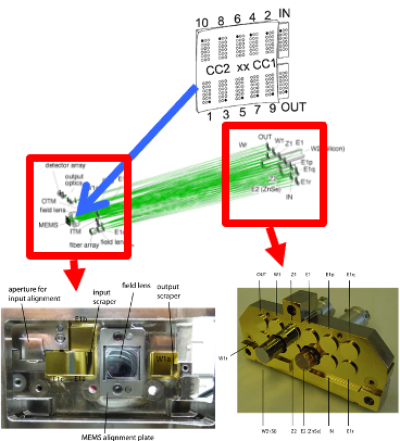
Betty Lise Anderson (Electrical and Computer Engineering)
Dr. Anderson investigates the use of free-space optical systems to solve engineering problems. Based on a multiple-bounce switching engine, an array of light beams rattles around between a systems of mirrors, periodically striking a spatial light modulator such as a liquid crystal or micro-electro-mechanical mirror array. Each beam can be switched among many optical paths to perform various functions. One such application is optical switching (like in data centers), another is providing true-time delays for steering phased-array antennas. The picture shows the anatomy of an optical true-time delay device providing more than 6 bits of delay for 112 separate light beams for 112 antennas, in a volume the size of a shoe-box. This approach has the lowest SWaP (size, weight and power) of any known solution.
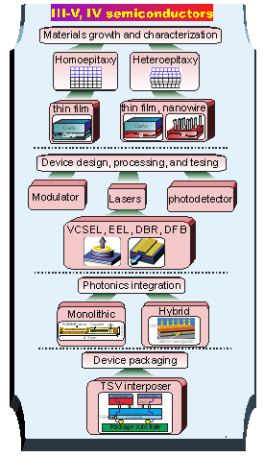
Shamsul Arafin (Electrical and Computer Engineering)
Prof. Arafin’s research experience lies in the design and fabrication of widely tunable semiconductor lasers, including vertical-cavity- and photonic crystal-surface-emitting lasers. His research interests also center around III-V compound semiconductor nanotechnology for materials and devices: molecular beam epitaxial growth and characterization of thin films (and nanoscale) materials as well as realization of novel optoelectronic devices. His research further extends to photonic integrated circuits, micro- and nanocavity light sources and quantum photonics. Various materials systems including nitride, arsenide, phosphide, and antimonide are used to platform this device level research. Materials are grown by Molecular Beam Epitaxy and Metal-Organic Chemical Vapor Deposition.
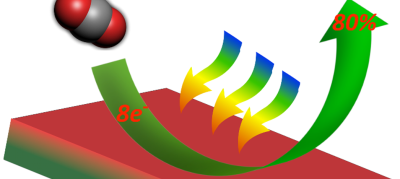
Robert Baker (Chemistry)
The Baker group focuses on understanding surface electron dynamics and interfacial charge transfer in catalytic systems. Much more is currently known about molecular photophysics and photochemical reaction dynamics compared to surface photochemistry due to the challenge of probing surfaces selectively with sensitivity to oxidation state, spin state, carrier thermalization, lattice distortions, and charge trapping at defect states. Femtosecond soft x-ray reflectivity developed in our group is now enabling such studies with the goal of advancing the field of surface chemical physics.

Christopher Ball (ElectroScience Laboratory)
Dr. Ball develops sensor and communication technology across the electromagnetic spectrum, from RF to X-rays and everything in between. Recent examples include a near infrared spectroscopic sensor to assess the quality of food and agricultural products, an X-ray communication system for high data rate spaceborne communications, infrared detector technologies that enable remote lidar and imaging sensing for Earth science and military applications, laser imaging to detect and characterize methane leaks, and sub-millimeter wave spectroscopic sensor to detect formaldehyde and other carbonyls in ambient air.
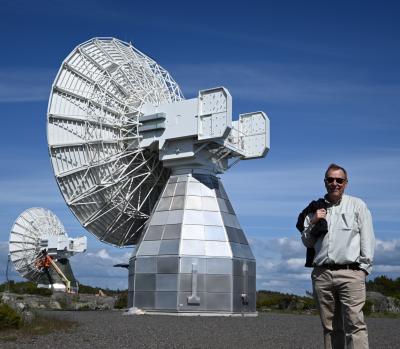
Michael Bevis (School of Earth Sciences)
Michael Bevis is a geophysicist who specializes in geodesy and its application to Earth system science and geodetic technology. His interests intersect with those of IOS in two areas: the use of lasers to position one satellite relative to another, and ground-based optical imaging systems that track the star field for the purpose of measuring deflection of the vertical, that is, the degree to which the local gravity field's orientation deviates from the nominal zenith/nadir direction defined as the perpendicular to the reference spheroid. Both these applications involve optomechanical components.
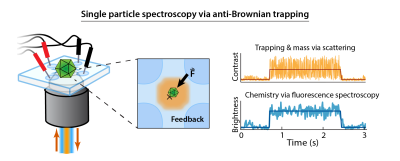
William (Memo) Carpenter (Chemistry and Biochemistry)
The Carpenter Group is investigating, at the single-particle level, the structural and molecular dynamics of biomolecular nanoparticles, such as drug delivery nanoparticles and bacterial nanocompartments. These objects are increasingly important as tools in medicine and energy science, but many existing measurements obscure their underlying richness. To study these nanoparticles, we are primarily using optical techniques from single-molecule and time-resolved spectroscopy to gain access to their variability and unique dynamics. In particular we have developed a solution-phase, anti-Brownian nanoparticle trap, advancing our ability to optically detect and interrogate each nanoparticle in a solution environment. Our single-particle spectroscopic measurements hold promise uncover behavior never before seen in these nanoscopic systems.
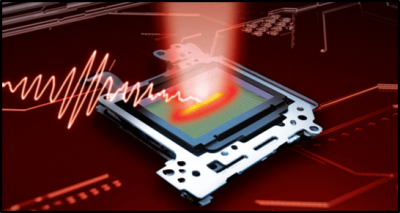
Michael Chini (Physics)
Mike Chini’s group focuses on the development and application of next-generation laser-based attosecond light sources and field-resolved spectroscopic tools to study electron dynamics in atoms, molecules, and solids. They use ultrafast lasers to generate coherent few-cycle light sources, covering terahertz to exahertz regions of the electromagnetic spectrum, and apply them using time-domain optical and photoelectron spectroscopies. The goals of the research are to probe the dynamic electronic structure of materials driven strongly out of equilibrium by an intense laser field, and to investigate the physics of electron wave packet coherence and electron correlation on extreme time scales.
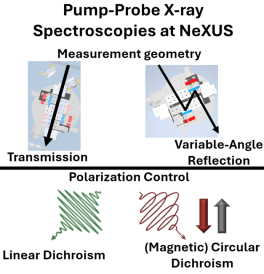
Conner Dykstra (NeXUS)
Our ability to convert energy into work of various forms is dictated by the dynamic carrier – carrier and carrier – lattice correlations. Understanding these relationships is critical for advancing next generation light driven technologies, such as solar energy harvesting or data storage. Transient X-ray absorption and (magnetic) circular dichroism gives insight into population and spin dynamics with elemental resolution. When implemented with an Extreme UV source through High Harmonic Generation, the temporal resolution reaches single-digit femtoseconds, illuminating the critical dynamic correlations and leading to tailored next-gen materials.
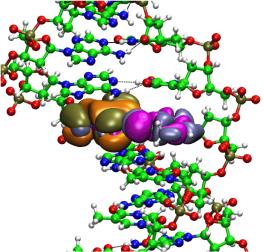
John Herbert (Theoretical Chemistry)
Research in the Herbert group aims to develop theoretical methods and software for computational spectroscopy. We are interested in quantum chemistry (broadly defined), and our group is amongst the leading developers of the Q-Chem software package.
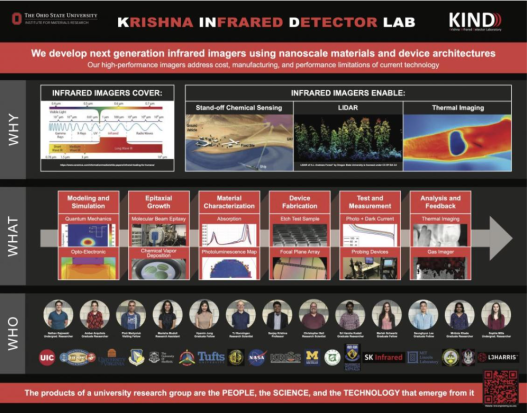
Sanjay Krishna (Electrical and Computer Engineering)
The Krishna Infrared Detector (KIND) Laboratory at The Ohio State University focuses on advancing infrared photonic detector and imaging technologies. The lab’s mission is to train engineers, push the frontiers of science, and develop technologies that benefit humanity through research in semiconductor based infrared detection and imaging. We are working toward the next generation of infrared imaging systems, including high-operating temperature detectors, large-format arrays (e.g., 4K × 4K), multispectral detection (simultaneously capturing multiple infrared wavelengths), and scalable manufacturing. We envision an infrared retina that has pixel-level features like tunable wavelength response, polarization sensitivity, and dynamic adaptation to the environment — essentially making bio inspired infrared sensors.
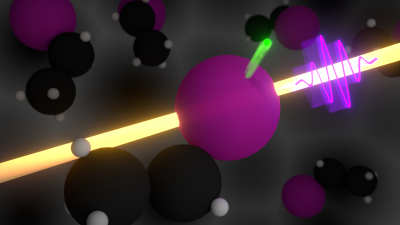
Alexandra Landsman (Physics)
Our theoretical group studies the ensuing dynamics when ultrashort intense light shines on atoms, molecules and condensed matter systems. These ultrashort flashes of light are on a time scale of attoseconds (10^(-18) seconds) to femtoseconds (10^(-15) seconds), which is comparable to the time-scale of the electron motion inside matter. The ultimate goal of this field is accurate imaging and control of electron dynamics on the attosecond time-scale.

Kiryung Lee (Electrical and Computer Engineering)
We investigate optimization theory and algorithms for inverse problems that arise in applications in imaging, signal processing, and statistics. We aim to develop computationally efficient numerical algorithms designed with principled optimization approaches and backed by mathematical performance guarantees. Our recent projects established theory and algorithms for blind spike-deconvolution and piecewise linear regression. These results will advance the understanding of the mathematical foundations of various imaging modalities and broad nonlinear scientific modeling.
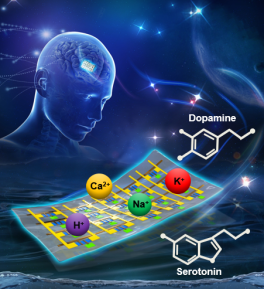
Jinghua Li (Materials Science and Engineering)
A key innovation in Li’s research is the emphasis on addressing the biochemical dimension within the realm of bio-integrated electronics and optoelectronics. In contrast to the well-established and commercialized systems for monitoring biophysical signals such as electrophysiology and oximetry, the exploration of biochemical signals is still in its early stages in current research endeavors. Achieving optimal functionality in these sensing schemes demands a holistic understanding of biochemical interfaces, transducers, and their electrochemical coupling strategies with optoelectronics. Centered on electrochemistry, Li has developed advanced analytical methods that connect solution-sensor interfaces (enzymes, aptamers, ion-selective membranes) with thin-film materials/electronics (diodes, field-effect transistors, fuel cells) to quantify biochemical signals. Her research outcomes have resulted in a broadly applicable biosensing framework at Ohio State, enabling her and her colleagues to conduct diverse biosignal assessments tailored to specific scenarios. Li's research group has demonstrated integration schemes for creating bio-integrated electronics, such as neural probes and sweat patches, that interact with biomarkers, including metabolites, ions, and neurotransmitters, in both animal models and human subjects. These systems successfully address long-standing limitations related to form factor mismatch at the biotic-abiotic interface and have been proven to reliably capture biochemical information continuously. By exploring various modalities, including transient and long-term, static and dynamic, wearable and implantable, her research will ultimately result in the development of engineering tools for monitoring multiple bio-signals through stable integration with biosystems.

Premashis Manna (Chemistry and Biochemistry)
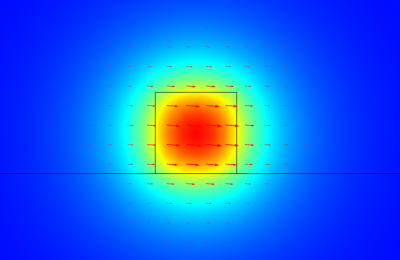
David Nippa (ElectroScience Laboratory)
Dr. Nippa is a research scientist specializing in the development of cutting-edge technologies across a wide range of applications involving the electromagnetic spectrum. With expertise in integrated optics, he has designed and tested advanced planar lightwave circuits for high-speed modulation, photon pair generation through spontaneous parametric down-conversion, and sensor systems. Additionally, he has worked on microwave photonic systems that leverage photonic technologies to enable high-data-rate communication at millimeter-wave frequencies. His background also includes the creation of computational electromagnetics simulation software, applied to fields such as passive radar, directed energy, and GPS receivers.
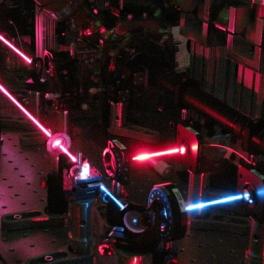
Steven Olmschenk (Astronomy/Physics)
Steven Olmschenk does research in experimental atomic physics and quantum information with laser-cooled, trapped ions. Trapped atomic ions are one of the leading platforms for applications in quantum information due to their long trapping times, good coherence properties, and the precise control of quantum states enabled by microwave and laser radiation. Dr. Olmschenk is pursuing methods to directly interface trapped ions with infrared, telecom-compatible photons, where the attenuation in optical fiber is minimized. Interfacing ions with infrared photons is expected to be advantageous for protocols that utilize atom-photon entanglement, including quantum networks for applications in secure communication and distributed computation.
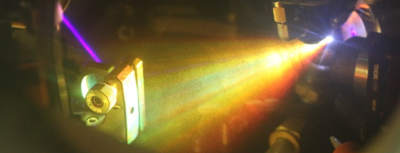
Christopher Orban (Physics)
Prof. Chris Orban is a computational plasma physicist focusing on ultra-intense laser interactions with solid or liquid density targets. Specifically he investigates ways to enhance particle acceleration that occurs in these interactions without increasing the laser energy. Machine learning can play an important role in finding experimental parameters that maximize the particle acceleration, especially when high repetition rate ultra-intense laser systems are connected to state-of-the-art data acquisition systems, such as the laser system at the Extreme Light Lab at the Air Force Institute of Technology. Orban also collaborates on experiments with LaserNetUS, which is a Department of Energy funded network of ultra-intense laser facilities.
Michael Poirier (Physics)
My lab is focused on (i) understanding how eukaryotic genomes regulate transcription and (ii) developing DNA-based nanotechnologies for probing biomolecular conformational dynamics and function in vitro and in vivo, and for materials applications. Our methodologies include a range of single molecule approaches, many of which are optical based include single molecule fluorescence and single molecule force spectroscopy with optical traps. I am interested in helping to work with other IOS members to build the community of optical sciences.
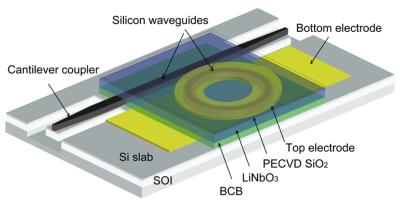
Ronald Reano (Electrical and Computer Engineering)
Reano's research activity is in the area of integrated optics and photonics. Integrated optics involves the manipulation of light at the micrometer and nanometer scales. It is analogous to integrated electronics. Instead of electrons, however, photons are guided and controlled on the surface of an optical chip. Thin-film technology is applied to realize optical circuits and devices for the purpose of achieving high-performance optical systems with advantages in efficiency, miniaturization, mechanical stability, and economies of scale. Applications span sensors, communications systems, and computing.
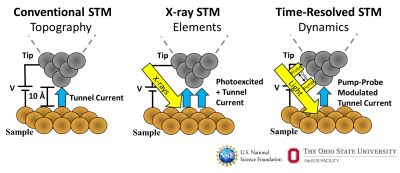
Seth Shields (NeXUS)
Seth Shields is a research scientist at the NSF NeXUS Facility, specializing in scanning tunneling microscopy (STM) studies. STM is a surface science technique capable of probing physical and electronic structure with angstrom scale spatial resolution, but possible experiments are constrained by limited time resolution and lack of elemental resolution. His work at the NeXUS facility attempts to address these two long-standing weaknesses by integrating an ultrafast extreme ultraviolet (XUV) beamline with the STM end station. Illumination of the STM tip-sample junction in an optical pump-probe scheme allows for time-resolved measurements, while tunable XUV light allows for specific core levels to be probed, resulting in spatially resolved elemental maps.
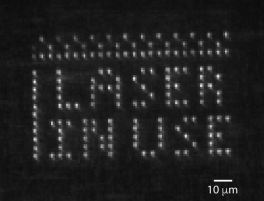
Kevin Singh (Physics)
The Singh group applies the tools of atomic physics and optical science to build large-scale, programmable quantum devices. The group uses these highly programmable devices to investigate quantum mechanics at the atomic scale, understand relevant and related models in condensed matter physics, and construct next-generation quantum computing, sensing, and communication technologies. To experimentally pursue these goals, the group relies on optical techniques and light-matter interactions to precisely control the quantum states of large arrays of individually trapped neutral atoms.
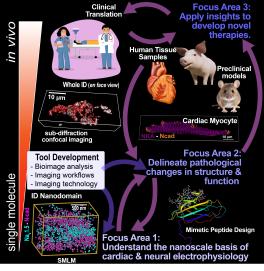
Rengasayee (Sai) Veeraraghavan (Biomedical Engineering)
The Nanocardiology lab's long-term research goal is to elucidate the dynamic relationship between the nano-scale structural milieu of ion channels and macroscopic electrophysiology of excitable tissues in health and disease. Of particular interest to my laboratory are the structural underpinnings of cardiac electrical impulse propagation – specifically, the role of specialized nanodomains within cardiac myocytes in the process. Our approach to this problem utilizes a diverse array of imaging techniques, ranging from super-resolution nanoscopy (STORM, STED, Minflux) to whole heart optical mapping, in conjunction with innovative, high throughput image analysis approaches. Thus, we divide our efforts between developing novel imaging and image analysis tools and applying them to advance our life science research.
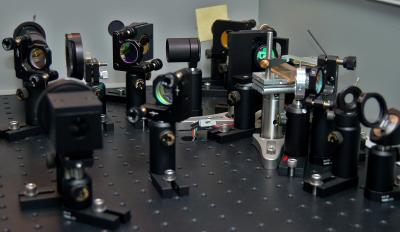
Wes Walter (Physics)
Wes Walter does research in experimental atomic, molecular, and optical physics. In collaboration with Dr. Dan Gibson, he uses lasers, OPOs, and synchrotrons to study negative ions with main goals of expanding the physical chemistry database and better understanding the role of electron correlation in atomic and molecular structure and dynamics. Recent work has focused on high-precision measurements of atomic electron affinities, photodetachment spectroscopy of negative ion bound and quasibound excited states, and studies of electronic and radiative decay dynamics in negative ions. Dr. Walter conducts experiments both on campus at Denison University and at scientific user facilities including the Advanced Light Source at Lawrence Berkeley National Lab and the DESIREE ion storage ring at Stockholm University, Sweden
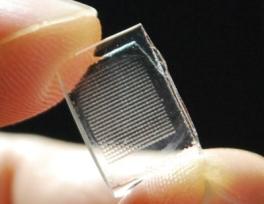
Allen Yi (Industrial and Systems Engineering)
Professor Yi's research activities have been in the general area of precision engineering with a focus on high volume optical fabrication, freeform and micro-optics fabrication as well as micromachining processes for medical and biomedical device fabrication. Professor Yi’s current research interests include compression molding of glass optics and injection molding of high precision polymer optics. He is also interested in combining refractive optics with diffractive and meta structures for more efficient and compact applications in consumer optics.
Are you an IOS Member and would like to have your research on this page? Please contact Jessi Middleton

